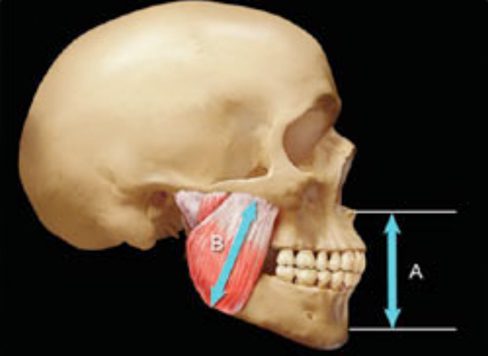By: Dr. Leonard A. Hess, DDS
Clinical Director, The Dawson Academy
The Article Originally Appeared on TheDawsonAcademy.com
If you follow The Dawson Academy protocols, altering the vertical dimension is going to be the exception rather than the rule.
We can work with the vast majority of patients vertical dimension and still fulfill the five requirements for occlusal stability and get a beautiful esthetic result.
The other thing you are going to find is that vertical dimension really doesn’t have to do with comfort.
Patients can be very comfortable at a variety of vertical dimensions, as long as they are in centric relation.
3 Common Reasons to Change Vertical Dimension
There are times for prosthetic convenience, however, that we do need to alter the vertical dimension.
There are 3 common reasons we would do so:
- Because of concern of pulpling pinchment by prepping severely worn teeth
- Because we need to conserve tooth structures so we can have proper retention resistance form
- Occasionally to create a more shallow anterior guidance
Keep in mind, that altering vertical can be done restoratively, but it can also be done very conservatively by extruding teeth orthodontically.
From the start, you should be worried about steepening the guidance and restricting the envelope of function when you lengthen anterior teeth. This is why we must determine the least amount of vertical dimension that is needed before we proceed with any treatment.
How to Determine Vertical Dimension
We determine the vertical dimension by working with mounted casts in centric relation and going through our 2-D and 3-D checklists to determine the least amount of vertical that is needed to fulfill the five requirements of occlusion and stability.

After determining the least amount of vertical dimension, we transfer what looks good on the articulator into the mouth. Then we work with provisional restorations to make sure that we have good occlusion, phonetics and esthetics.
Once the provisional restorations are adjusted, the vertical dimension will be duplicated in the permanent restorations.
We find that it’s rare to have to change vertical more than two or three millimeters, even in extremely worn cases. And if we do it by working in centric relation, we can often do so by having very little change in the length of the masticatory muscles.
This will allow for vertical changes that are really imperceptible to the patient.
The Patient to be Extremely Careful Of
The one patient to be extremely careful of, though, is when by evidence the patient may be a central nervous system bruxor.
That’s the patient that has built up buccal exostosis around his arch form. If you have really dense alveolar bone the buccal exostosis shows a lot of wear. These types of patients may go back to their original vertical even after you change it at the expense of your restored materials.
If you are ever concerned about this happening, you can certainly test-drive provisionals for a few months.
Make sure that the temps are staying stable, the patient is comfortable, the restorations are not breaking and they’re staying in place.
If they’ve done well with acrylic then there is every indication that if you follow those same contours in the patient’s permanent restorations they will do just fine.
Keep Reading: How Does the Occlusal Plane Relate to the Anterior Teeth?


